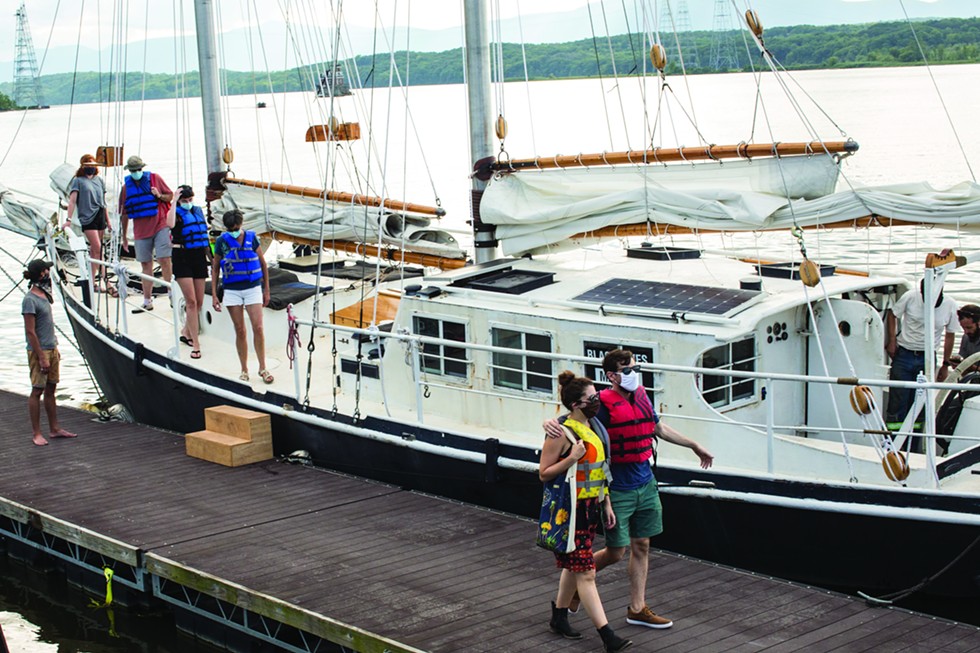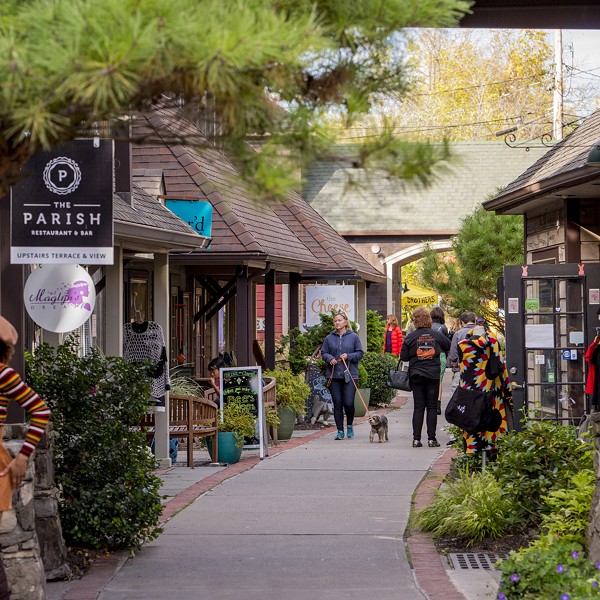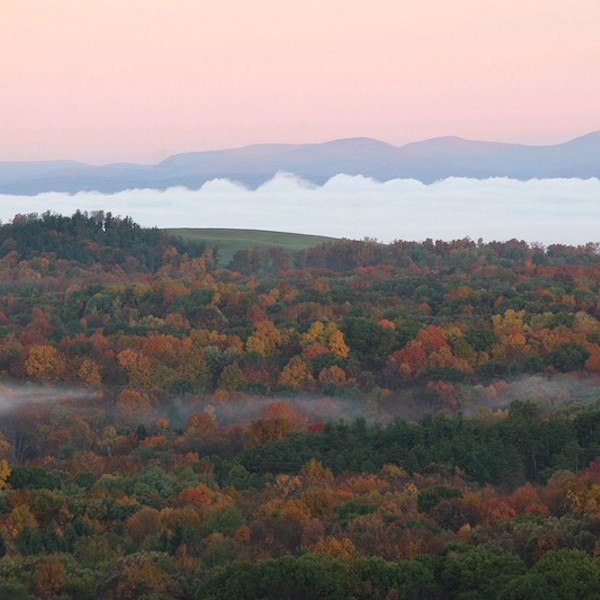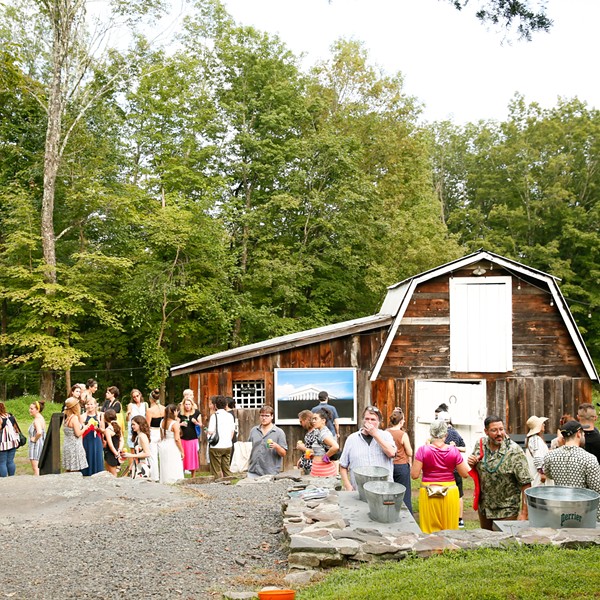As stores across the New York were boarded up during the spring pandemic wave, sales plummeted, and a major source of revenue for the state and local governments dried up with it.
Sales tax revenues statewide dropped more than 24 percent in April, according to the New York State Department of Taxation and Finance (NYSDTF). While county governments and the municipalities they split local sales tax with were grappling with that loss, New York began withholding 20 percent of state aid to cover its own revenue losses.
However, sales tax revenue in certain communities jumped over the late summer as downstate residents temporarily relocated and spent in their new environs. In some communities, the upsurge has made up for the plunge in the spring.
Woodstock Town Supervisor Bill McKenna said downstaters had come up this summer in “tremendous numbers.” Though Woodstock normally attracts a deluge of visitors in the summer—McKenna calls his community “a tourist town”—many were staying longer than normal this year.
“The second homeowners are staying up here on a more permanent basis—permanent-temporary, at least—and we’re seeing a lot of the short-term rentals are renting out long-term to city people,” McKenna says. He estimates the town’s population had risen “25 percent, at least.”
Woodstock’s sales tax revenues were at 80 percent of the full year’s budgeted levels as of November 20, according to McKenna, with the busy Christmas shopping season still ahead. And even with a resurgent pandemic possibly affecting December sales, McKenna said he was not concerned because sales tax revenues had been so solid thus far.
In Peekskill, sales tax revenues “took a nosedive” in the spring, says city comptroller Matt Alexander, but rebounded in the summer, doing significantly better than in 2019.
The city budgeted for sales tax revenues of $4.6 million this year. Even with the spring plunge, Alexander says the city now predicts it will take in $4.3 million by the end of the year.
“It doesn’t make you think of a pandemic,” he says.
Like McKenna in Woodstock, Alexander also believes the upsurge is partly because of new arrivals. “There’s obviously been a lot of real property turnover, people buying real property up here, and a lot of them have been out exploring, a lot of them need new furniture.”
On top of that, others are “more likely to be working at home…and spend money in the community instead of some place they might’ve commuted to,” he adds.
In Hudson, the pandemic was expected to have a catastrophic impact on sales tax revenues. City treasurer Heather Campbell released a report in mid-May predicting revenues would be down between 50 and 75 percent this spring compared to last year, and 20-25 percent during the summer.
However, the city, which has become a prime destination for downstate weekenders in recent years, did far better than predicted. Sales tax revenues fell only about 14 percent during the spring and were actually 8 percent higher than 2019 in the summer.
The situation is similar in Kingston, which has seen a flood of downstaters move in since the pandemic began. City comptroller John Tuey predicted sales tax revenues would fall between $2.3 and $3.3 million, according to the Daily Freeman. He now predicts it will be down between $678,000 and $2.1 million.
Even during the spring wave, sales tax revenues in many Hudson Valley counties declined less than in surrounding areas. Columbia County, of which Hudson is the county seat, saw its sales tax fall 11.8 percent year over year in the spring, compared to 37.8 percent in New York City, according to a report by the New York State of Counties (NYSAC). The declines were also shallower than in areas farther north that had fewer COVID-19 cases; for example, sales tax revenues fell 17.2 percent in Saratoga County and 14.2 percent in Albany County.
Sullivan County Treasurer Nancy Buck says she was “nervous” about the summer’s sales tax take, with NYSAC predicting the county would take in millions of dollars less than expected before the pandemic. But Sullivan County took in more money this summer than last year and is only down $33,000 for the entire year.
Sullivan County has a lot of second homeowners, Buck says, and many came up and worked from these homes when their offices in the city closed. The money from the county lodging tax tripled from prior years because of the number of Airbnb guests.
The county also received a large chunk of money from increased internet sales, Buck says, though the exact amount is not publicly available. New York began collecting sales tax on internet most purchases made within the state in 2019 after a Supreme Court ruling. Prior to this, the state only collected sales tax when the seller had a brick-and-motor presence in the state.
“We don’t have a lot of retail,” Buck says. “We had a lot of sales tax coming in through the internet sales—that’s why our numbers aren’t as bad, because people are shopping from home and Sullivan County is getting the sales tax that it doesn’t get when people go to Orange County or Pennsylvania or Dutchess County.”
The county budgeted for far more sales tax revenue than last year because of anticipated revenue from Resorts World Casino in Monticello, the Kartrite Resort and Indoor Waterpark, and two new hotels serving the establishments. The casino was closed most of the summer and the water park closed for the entire season due to COVID-19 restrictions.
“We’re still in the hole millions of dollars,” says Buck, noting the casino and resort closures, as well as the 20 percent withholding of state aid. “If we only talk one thing, it sounds positive, that we’re in better shape than we anticipated. But it’s still bleak.”
Local governments take a minority of their revenues in through sales tax, relying most heavily on property taxes, as well as state aid, lodging taxes, and fees related to parking and permits.
Local governments are still hurting, and Governor Cuomo is pleading for aid to state and local governments in another federal pandemic stimulus, which he says will allow him to release the 20 percent of aid to municipalities he has been withholding.
For now, the increase in sales tax due to downstate migration and increased internet sales is a bright spot in an otherwise dark picture.


















